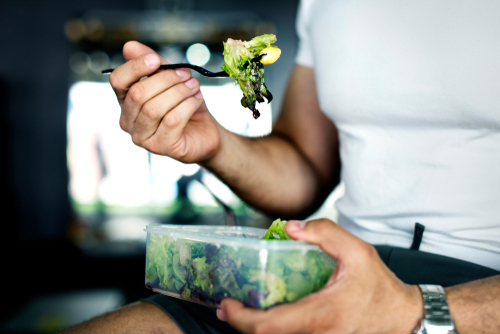With everyone talking about Clean Eating these days, do you really know how to eat clean? Below, not only will it be clear what clean eating is and also what you should be eating.
Eating clean is a good way to change your eating habits. It is about eating more of healthier choices in each of the food groups, while cutting down on eating the unhealthy options. For an overall healthy clean eating plan, you will need to have foods in your diet such as; vegetables, fruits, whole grains, as well as healthy proteins and fats.
Eating clean is a lot easier when your pantry, refrigerator and freezer are filled with healthy choices. When you’re eating clean, whole foods like fruits and vegetables are the obvious choices. But minimally processed foods with short ingredient lists can also fit into a clean-eating diet. Choose foods with healthy ingredients like whole grains and healthy fats and those low in added sugar and salt. Here are some tips to help you stock your kitchen with foods that make it easier to eat clean.
Vegetables:
Vegetables, should be the building blocks of your clean-eating meals because they’re low in calories and packed with vitamins, minerals and fiber. Frozen and canned vegetables are healthy, avoid the ones without sauces and always be sure to read the label since, items that look plain may have added salt. You do not need to limit starchy vegetables like potatoes or squash, just be wary of the higher carb and calories you will consume. Choices for vegetables should include; any fresh vegetables, frozen vegetables with no sauce or added salt or canned vegetables with no sauce or added salt.
Fruit:
With fruit you need to be aware of the added sugars in canned fruits or dried fruits which only provide empty calories. Fruit juice can count toward your daily recommended fruit intake, just make sure it’s 100% juice with no added sugar. Choices for fruit should include; any fresh fruit, canned fruit with no added sugar, frozen fruit with no added sugar, dried fruit with no added sugar or 100% fruit juice with no added sugar.
Whole Grains:
Nutritious and fiber-rich, whole grains, such as brown rice, quinoa, barley, oats or millet, are unprocessed and contain only one ingredient. They’re about as clean as you can get. When it comes to whole-grain products, look for whole-wheat versions of pasta, refrigerated pizza dough, bread and English muffins made with whole wheat flour and not sugar. Popcorn can also be a whole grain: If you buy the kernels and pop them on the stove or in an air popper for a clean snack. Choosing Clean Whole Grains should include; single-ingredient grains, such as millet, oats, barley, quinoa or brown rice, etc., whole-wheat pasta, popcorn, sprouted whole-grain, bread and english muffins (with no added sugar), or whole-wheat pizza dough.
Dairy:
Choose plain yogurt (either regular or Greek) over vanilla or fruit-flavored yogurts, which are usually high in sugar. Dairy products, such as cheese and milk, can do double duty: eat them solo or use them as ingredients in cleaner homemade versions of foods. There are non-dairy alternatives, such as soy, coconut and almond milk? Look for unsweetened varieties to avoid added sugar. Dairy choices should be; plain yogurt, milk, cheese, unsweetened nondairy milks.
Protein:
Choose leaner meats, such as chicken breast and chicken thigh, sirloin and lean ground beef. Meat offers protein, iron and vitamin B12. Eating clean means avoiding processed foods, stay away from salami, pepperoni, bologna and hot dogs, they are usually high in sodium. Fish and shellfish can be super-healthy protein source and many fish contain heart-healthy omega-3 fats. Pacific cod, wild salmon and tilapia are all good choices. Eggs are a great option too, whites and yolks, don’t miss out on the extra protein and nutrients from the yolk. Nuts, seeds and beans are all great choices for plant-based proteins. Just be sure to look for lower-sodium options when possible. Here are some good choices for the protein in your diet; chicken breast, chicken legs, lean ground beef, etc., seafood- wild salmon and Pacific cod are great, eggs, unflavored nuts (almonds, cashews, hazelnuts, walnuts), plain nut butters (no added sugar), dried beans or canned beans (make sure you rinse the beans to reduce the sodium by 35%).


No Comments